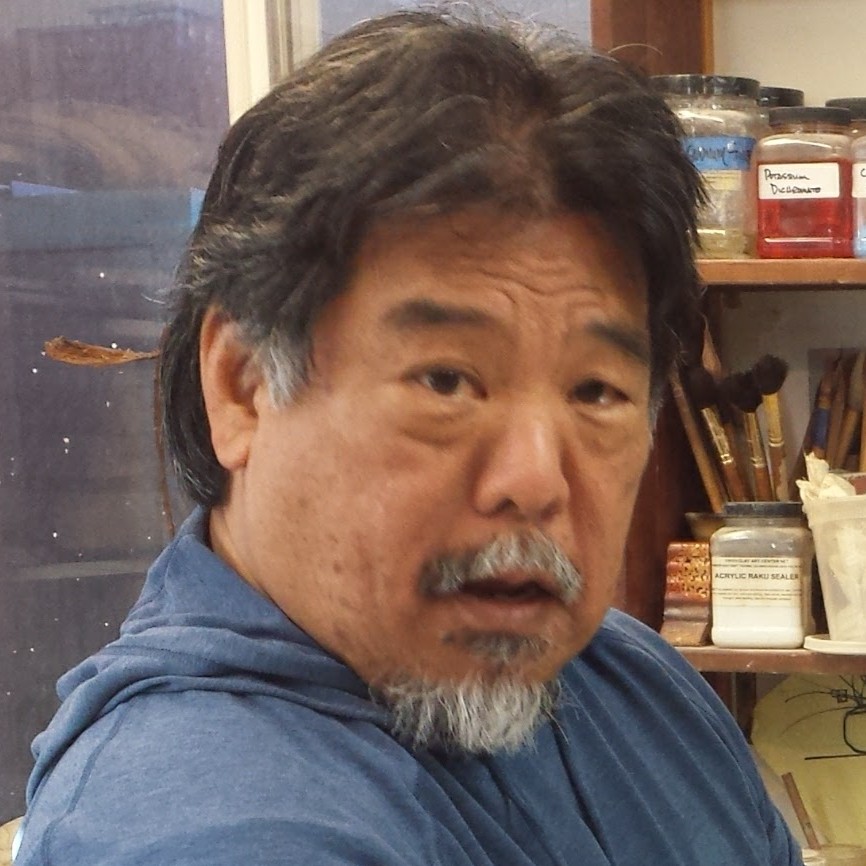We’re excited to introduce you to the always interesting and insightful Reid Ozaki. We hope you’ll enjoy our conversation with Reid below.
Alright, Reid thanks for taking the time to share your stories and insights with us today. Let’s start with the story of your mission. What should we know?
I’m now fifty years into my career as a ceramic artist. I also taught ceramics at Tacoma Community College for twenty-five of those years while also maintaining my personal work. I’ve now begun to think of my practice as more than just making pottery. I am at a point where I think that I can give back to the medium in a way that I did not as a teacher. Several years ago, I came across the Japanese word shokunin. It’s generally translated as “craftsman” and is a title earned after years of practice and accomplishment; however, craftsman doesn’t quite capture the full meaning.
A nuanced understanding of shokunin is more than just a title or reference to the acquisition of a certain level of skill; it implies a responsibility to present one’s best work in a spirit of social consciousness, to honor the traditions of the craft, and to pass that knowledge on. I found this concept expressed my thoughts very well.
One of the things that started me thinking about shokunin in the context of the state of the local clay community was the decision of a friend and potter, Loren Lukens, to relocate to California. In a medium where it’s easy to hunker down in one’s practice, Loren’s studio was often “pottery central.”
Any Thursday afternoon, you could always pop in to share lunch, get some information, or just enjoy some good humor. There was no real organization to it; it came about organically and was a gathering place for potters in the Seattle area and one of the focal points for the community.
Washington has a long history as an active ceramics community producing excellent contemporary ceramic art. Interest in our medium has been exploding in the last few years. New potters should also have the opportunity to know the traditions and generations of artists that preceded them, their work, and the impact they had on the way ceramic art is viewed. And those of us who have been around a while should get to know the folks who will carry the medium into the future. This is how I see the values of shokunin expressed today. This is what I wanted from the Salon.
(Seattle Times article: https://www.seattletimes.com/entertainment/visual-arts/why-seattles-pottery-scene-is-booming/)
However, the environment surrounding studio ceramics has undergone a paradigm shift during my career.
Throughout the country, retail galleries offering fine crafts have closed. With them went their curatorial expertise. They provided a place for artists to exhibit, view, learn, and make connections. They were venues for exhibitions that set standards for the craft and that offered the community building opportunity of the opening reception.
Also reduced were the opportunities for afterhours relationship building and information exchanges at craft fairs as the proportion of clay artists was reduced. Whether this is a choice of the organizers or a decision by the artists, we have become more isolated.
(Craft fairs have become increasingly expensive and clay price points may be a factor here. In addition an increasing number of artists are selling their work online.}
As I said before, interest in ceramics is booming. However, new clay practitioners are learning the mechanics in a much more consumer-driven way rather than an academically-focused approach. Whether online or in private studios, if you want to make “this cup, or that bowl” that’s what you will learn to do. You won’t get any of the foundational histories of the art; you won’t learn who made “this cup” before you thought of it; and you won’t see the pots that led to “this cup.” Lost in this transition to “retail Instruction” is the rich history and legacy of the craft. The context is missing.
There’s a role for this less formal interaction with clay, but that can’t be the only thing on offer.
There is a need for a collegial, informal space open to interested parties who have a passion for clay to meet each other, exchange information, offer help, and otherwise share hard-won experiences with peers.
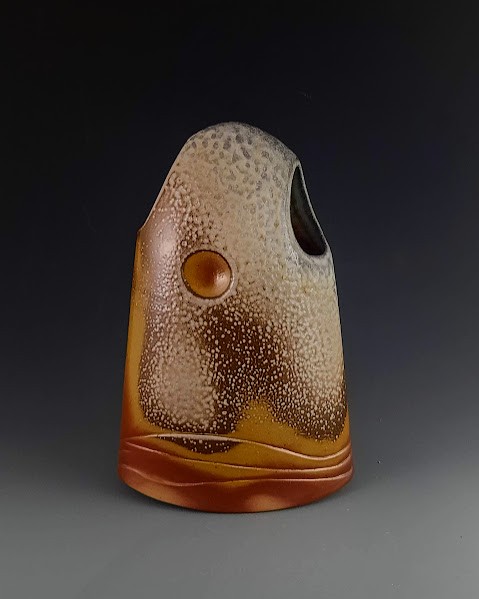
Awesome – so before we get into the rest of our questions, can you briefly introduce yourself to our readers.
“My ceramic vessels are informed by my interest in and love for the natural world and an interest in the aesthetics of the Japanese Tea ceremony. My work endeavors to synthesize this aesthetic with Western techniques and materials.”
Some of my earliest memories are of swimming around in the tide pools near Hilo, HI and playing under the tree ferns near Hawaii Volcanoes National Park. This was the beginning of my interest in and love for the natural world. My grandfather created beautiful bonsai and built the Japanese inspired gardens and ponds surrounding his home. That had a great influence on my developing sense of aesthetics.
In 1969, I enrolled at the University of Puget Sound with the intention of studies in Biology. As a junior, I took my first ceramics class; I finished a degree in Biology but my main interest was now in ceramics.
At UPS my work was influenced by my teachers F. Carlton Ball and Kenneth D. Stevens and visiting artist Frederick L. Olsen. Carlton’s enthusiasm for clay got me into ceramics. From Fred I learned many of the techniques I use today. Ken’s work was what I aspired to. I created work using clay and glazes like Ken but more importantly, he taught me careful craftsmanship and attention to detail.
Over the years, my interest in the traditional Japanese arts has grown. At first my interest was in plants and gardens. This quite easily transitioned to an interest in Ikebana (flower arranging), and then to Chado (Japanese tea ceremony) and its influence on pottery. As I’ve learned more about the Tea ceremony, I have come to know how central that aesthetic is to Japanese art. While my work has changed several times during my career, this aesthetic is the underlying foundation to it all.
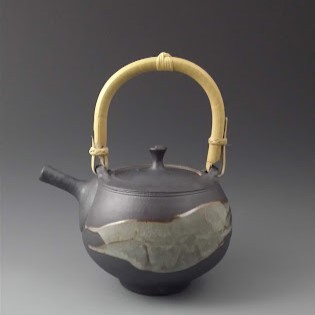
Is there mission driving your creative journey?
As I mentioned earlier, in the discussion of the Salon, I want those who are new to the medium of ceramics to appreciate the long, rich history of the craft, and to realize how closely they are connected to those practitioners thousands of years ago. I’d like them to come away from the Salons with an appreciation of the craftsmanship necessary for the medium to continue long into the future.
In my personal practice, I will continue to make work that represents my current understanding of the Tea aesthetic that I mentioned earlier, and continue to deepen that understanding.
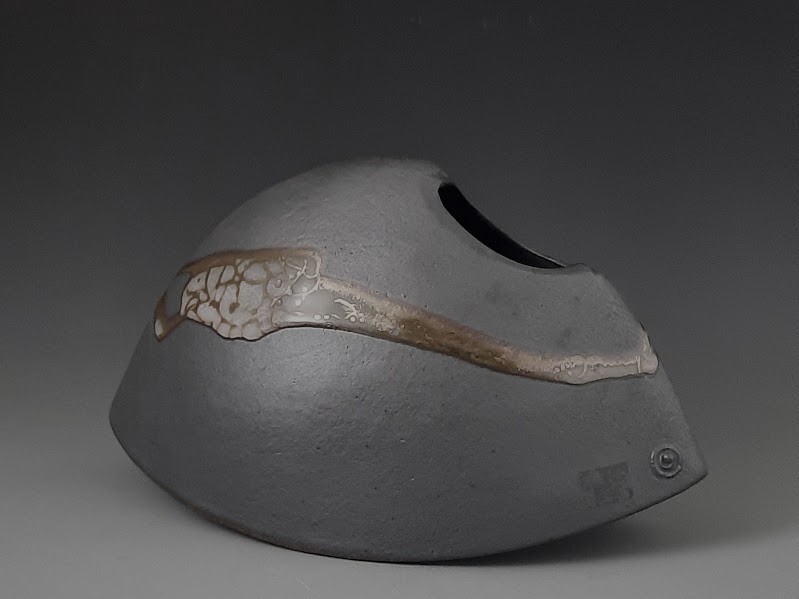
We’d love to hear about how you met your Co-host.
The Beginning of the Tacoma Pottery Salon
I really only had a bunch of ideas swirling around in my head when I had the great and good fortune to run into Kristina Batiste. She is enthusiastic, organized, relentlessly hard-working, and the heart of what we’re doing at the Tacoma Pottery Salon.
I first met Kristina Batiste When she was a continuing education student at Tacoma Community College. It was a where one could meet all manner of the potters, see a range of styles and work, and interact with other students who had a deeper knowledge of the craft. With COVID, that kind of experience was simply no longer available. As someone who missed that experience, she was all in. She is the one who proposed the (mostly) monthly gatherings in her home.
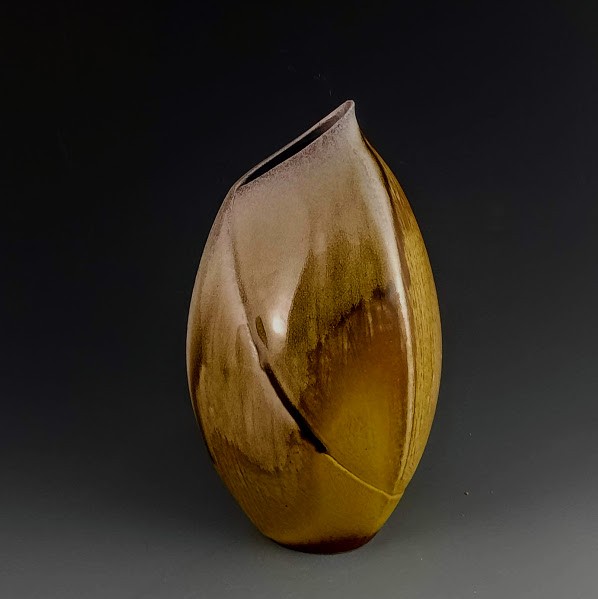
Contact Info:
- Website: www.reidozaki.com
- Instagram: @reidozaki
- Other: www.tacomapotterysalon.org @tacomapotterysalon
Image Credits
artist


